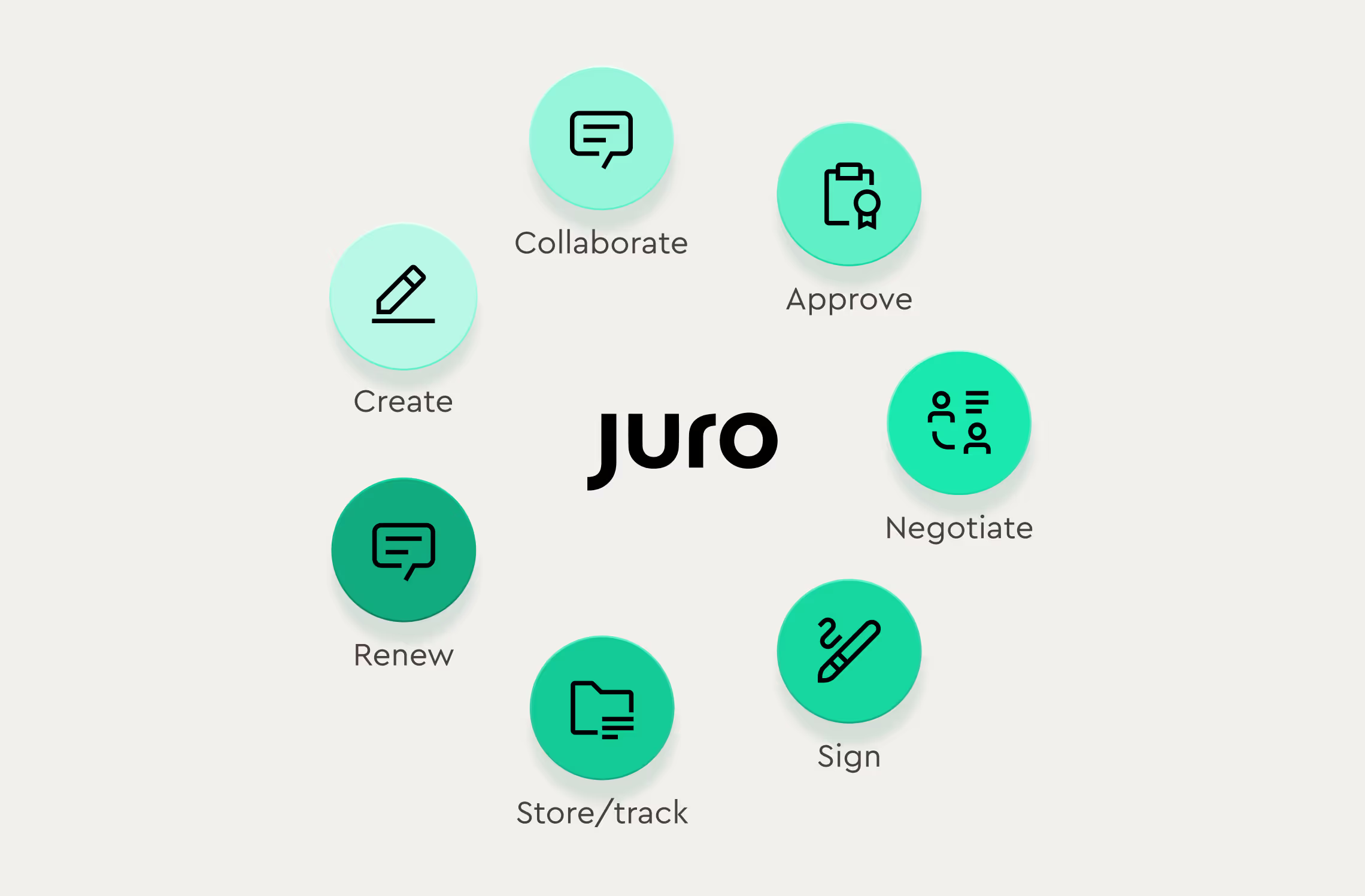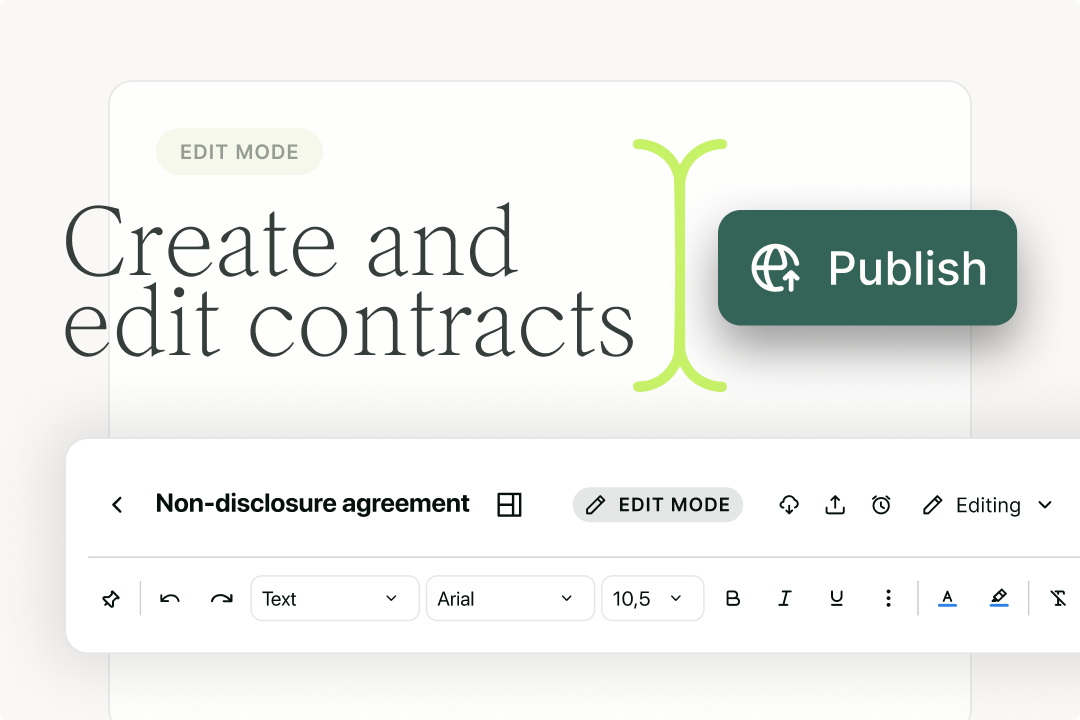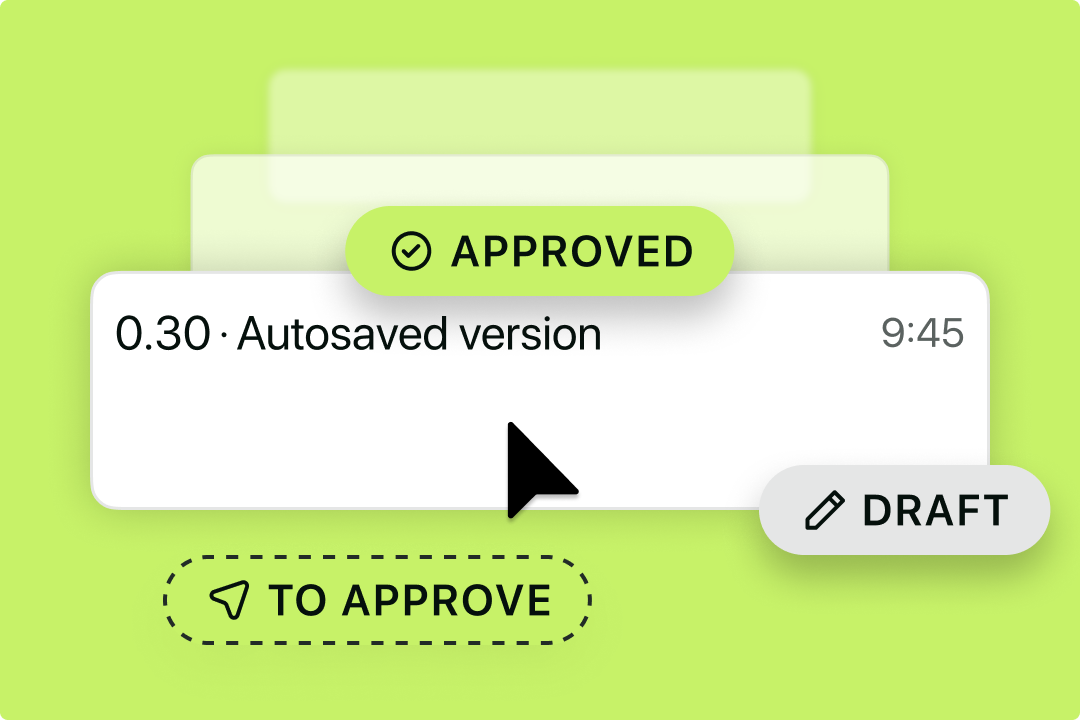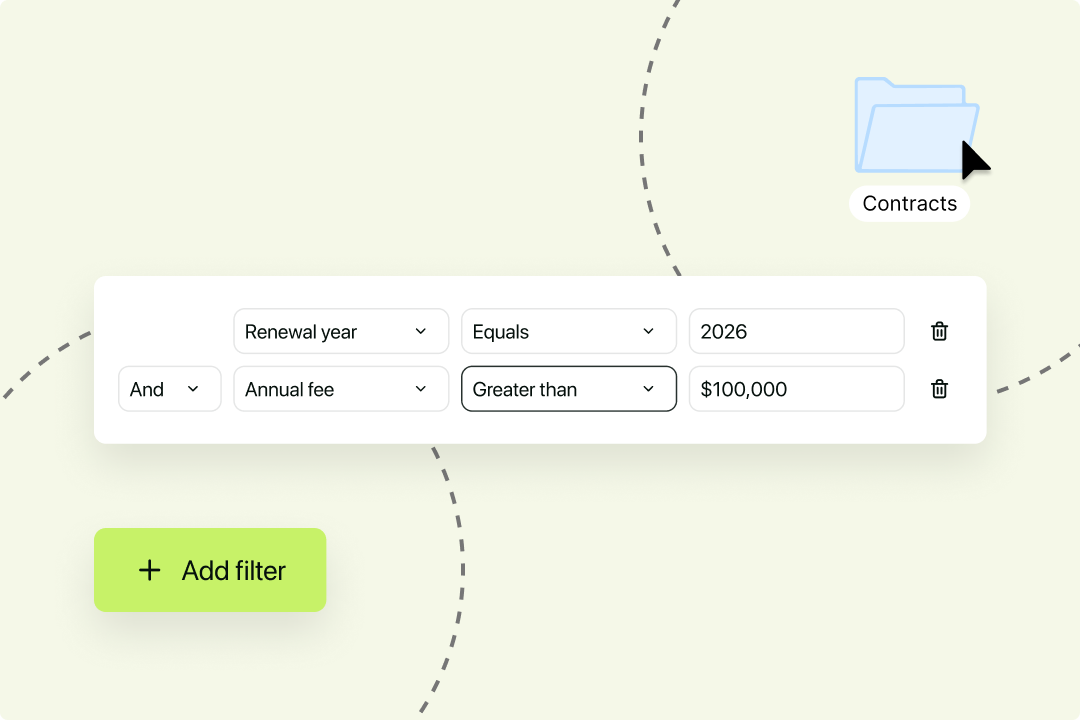Solutions
Customer Support
Resources
Contracts are complex. They can create value if executed well, and risk if they aren’t. The secret to a successful contract? A robust contract lifecycle management process.
In this guide, we’ll explore the various stages of a contract lifecycle, and what you can do to ensure success in every phase.
Contract Lifecycle Management (CLM) is the process of efficiently managing all stages of a contract, from initiation and creation to execution, performance, and eventually, expiration or renewal.

What contract lifecycle management looks like can vary between businesses, and some companies do it better than others. Let’s explore the contract lifecycle management process step-by-step, with practical examples of what you can do to manage your agreements better at every point.
Before a contract can be created and managed, it needs to be requested. This is the first stage of a contract lifecycle, and it's also known as contract initiation.
Within a traditional workflow, this typically involves the sales team (or another department) completing a contract request form or emailing a legal to request a new contract for a transaction they’re involved in.
What if you could generate your contracts and cut the contract request stage altogether?
If you integrate Juro with other business platforms, like a CRM solution, you can generate contracts when projects, deals, and transactions progress to a particular stage. This enables teams to self-serve on contracts, rather than requesting them from the legal function.
{{quote1}}
The next phase of the contract lifecycle is contract creation. This is when legal or business teams draft a contract covering the agreement's relevant terms, clauses, and conditions. This stage of the contract management lifecycle is also known as contract authoring.
Unfortunately, the least efficient way of doing this is also the most popular. At this stage, legal teams typically draft a contract in a Word document, either from scratch or using a template and inserting the specific details manually.
Fortunately, there is a faster, more efficient way to generate contracts. Legal and business teams can use automated contract templates and contract lifecycle management software to automate them.
Rather than inputting the contract data manually, individuals can auto-populate their contracts using smartfields and integrations with other business platforms, like Salesforce, HubSpot, or Greenhouse.

Once created, the contract is usually shared with internal stakeholders for review. They review the contract terms and request any changes. In traditional workflows, a Word document is circulated among relevant parties, each creating a new version with their redlines and comments.
This can cause some friction, though. Since most stakeholders work on individual versions of a contract, it can be difficult to compile these versions without a lot of back and forth between files. In some cases, revisions can be missed or mistaken because of poor version control.
Using a platform like Juro can resolve many of the issues experienced during the review stage of the contract lifecycle. This is because Juro allows users to add comments, suggestions, and redlines in real time.
Rather than trying to capture amendments across several different files, Juro users can view, add, and respond to comments and requests in one unified workspace. They have a single source of truth for changes made to a contract, putting them back in control.

It isn’t just the internal parties that need to agree to the contract’s terms. Counterparties do too. You need to get your counterparty to review and approve the contract, and that’s when the fourth (and often most painful) stage of the contract lifecycle happens: negotiation.
Contract negotiation involves discussing the contract’s terms with the stakeholders on the other side of the transaction. The standard terms agreed internally will be shared with the counterparty, usually via email and in a Word document, and redlined once again.
During this phase, you’ll often find that the counterparty will reject certain clauses and propose ones they view to be more favorable. Since negotiation is a deliberative process, you can expect multiple versions of a negotiated contract to move back and forth over email before the contract terms are eventually finalized. This can create delay and friction without the right tools and processes in place.
There are plenty of things you can do to improve your approach to contract negotiation. For example, you can prepare for the negotiation better and adopt some robust negotiation strategies.
However, the best way to negotiate a contract involves a departure from tools like Microsoft Word and email chains. It can be achieved in the same way that improving the internal contract review process can - by implementing the right contract collaboration software.

Using a platform like Juro to negotiate contracts enables teams to get contracts signed and agreed up to 10x faster, with real-time contract redlining capabilities and the ability to toggle between internal and external comments.
To find out more about how Juro enables businesses to agree contracts 10x faster than traditional tools, check out our case studies or hit the button below for a personalized demo.
Some contracts will also need to receive the seal of approval from senior stakeholders. This is often the case when you’re dealing with agreements that are high risk or value.
The contract approval phase of the contract management lifecycle is also important for clarity, as it ensures that contracts aren’t mistakenly pushed through to signing without the necessary say-so.
Requesting and receiving this approval often involves requesting and receiving written approval from the relevant stakeholders via email, with most requests buried in their inboxes.
You can also set up approval workflows to automate the approval process. This is a great way to assign certain roles and encourage individuals to act quickly on a request.

With a platform like Juro, users can set approval workflows for contract templates and even automate these workflows so that they are sequential, or triggered when certain conditions are met within the contract terms.
For example, you could use Juro’s contract lifecycle management solution to set approval workflows for contracts over a certain value threshold, or contracts that deviate from standard terms. This functionality can also lighten the workload for stakeholders tasked with approving low-risk, routine contracts by default.
Once approved by both parties, it’s time to get the contract signed. This stage of the contract lifecycle can be achieved either using wet ink signatures or with an eSignature.
Traditionally, this stage of the contract lifecycle process would involve using wet ink and physical paper contracts, meaning that contract parties had to be in the same room to finalize contracts. And if they weren’t, they’d have to print, sign, scan, and mail documents.
Today, it’s much easier to get business contracts signed. Electronic signing is usually completed using an eSignature tool like DocuSign or Adobe Sign, or a more comprehensive digital contracting solution like Juro.
With Juro’s native eSignature solution, users can sign contracts from anywhere. They can sign on their mobile devices and provide a frictionless signing experience for their counterparties.

Contract owners can even set up signing orders, allowing them to customize the sequence of signatures.
What happens to contracts post-signature? Too many businesses assume the contract lifecycle management process ends once a contract has been signed. Businesses that do this tend to file contracts away across shared drives and never look at them again.
The result? They have no visibility over their contracts, are unable to track valuable contract data, and struggle to monitor contract compliance effectively. By contrast, businesses that do recognize contract tracking as one of the different contract lifecycle stages can leverage the insights made available within contracts to save both time and money.
If businesses decide to track and manage their contracts, they often do so in excel. However, manual data entry and maintenance can be time-consuming for those tasked with tracking contracts. It’s also a process that’s susceptible to errors.
Like most stages of the contract lifecycle, this process can be automated using Juro. Juro’s data-rich contract repository captures contract data and pulls it into a clear, user-friendly contract dashboard.
This allows teams to quickly find and extract relevant data from contracts with no fuss. It also means that nobody is tasked with manually updating the spreadsheet every time a contract is created, renewed or amended.
Want to find out more about how to track your contracts effectively in 2026? Check out this guide to contract monitoring.

The final stage of the contract lifecycle management process involves deciding what happens to a contract when it ends. There are two options at this stage:
At this point, you can cancel contracts that are up for auto-renewal or choose to renew an existing contract if you wish to continue business relations. However, businesses that fail to capture and track these dates will find themselves missing the renewal deadlines. As a result, they end up in new contracts they want to escape, or are unable to renew on more favorable terms.
Contract reminder software can be an effective way to keep on top of upcoming deadlines when you manage large contract volumes. It empowers businesses to track upcoming contract renewals, expirations, and milestones by sending automated reminder notifications to the relevant parties.
In Juro, contract stakeholders can set up reminders for specific dates and times. They can even decide exactly who receives these reminders, allowing them to include or exclude specific individuals from notifications. This customization is great for when you want to bring additional stakeholders from finance, sales, and legal into the loop.
For more guidance, check out our guide to renewal management in 2026.
As we’ve just discussed, contracts enter various different phases as they progress through the contract lifecycle. Each stage, without the right tools and processes, can create plenty of contract admin for your in-house legal and business teams to contend with.
Fortunately, reducing this contract admin can be as simple as adopting the right contract lifecycle management software. CLM software enables legal and business teams to automate these processes and streamline the contract lifecycle for faster and more efficient way to manage legal agreements.
To find out more about how platforms like Juro can shorten time to revenue, reduce costly mistakes and enable you to agree contracts up to 10x faster, fill in the form below.
Lorem ipsum dolor sit amet, consectetur adipiscing elit. Suspendisse varius enim in eros elementum tristique. Duis cursus, mi quis viverra ornare, eros dolor interdum nulla, ut commodo diam libero vitae erat. Aenean faucibus nibh et justo cursus id rutrum lorem imperdiet. Nunc ut sem vitae risus tristique posuere.

